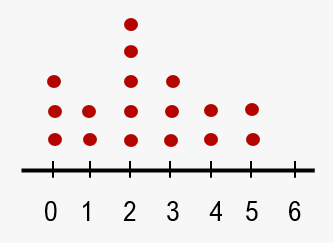The heights (in feet) and the number of stories of the ten tallest buildings in New York City are listed. Use a scatter plot to display the data. Describe any patterns. (Source: Emporis)
Table of contents
- 1. Intro to Stats and Collecting Data1h 14m
- 2. Describing Data with Tables and Graphs1h 55m
- 3. Describing Data Numerically2h 5m
- 4. Probability2h 16m
- 5. Binomial Distribution & Discrete Random Variables3h 6m
- 6. Normal Distribution and Continuous Random Variables2h 11m
- 7. Sampling Distributions & Confidence Intervals: Mean3h 23m
- Sampling Distribution of the Sample Mean and Central Limit Theorem19m
- Distribution of Sample Mean - Excel23m
- Introduction to Confidence Intervals15m
- Confidence Intervals for Population Mean1h 18m
- Determining the Minimum Sample Size Required12m
- Finding Probabilities and T Critical Values - Excel28m
- Confidence Intervals for Population Means - Excel25m
- 8. Sampling Distributions & Confidence Intervals: Proportion1h 12m
- 9. Hypothesis Testing for One Sample3h 29m
- 10. Hypothesis Testing for Two Samples4h 50m
- Two Proportions1h 13m
- Two Proportions Hypothesis Test - Excel28m
- Two Means - Unknown, Unequal Variance1h 3m
- Two Means - Unknown Variances Hypothesis Test - Excel12m
- Two Means - Unknown, Equal Variance15m
- Two Means - Unknown, Equal Variances Hypothesis Test - Excel9m
- Two Means - Known Variance12m
- Two Means - Sigma Known Hypothesis Test - Excel21m
- Two Means - Matched Pairs (Dependent Samples)42m
- Matched Pairs Hypothesis Test - Excel12m
- 11. Correlation1h 6m
- 12. Regression1h 50m
- 13. Chi-Square Tests & Goodness of Fit1h 57m
- 14. ANOVA1h 57m
2. Describing Data with Tables and Graphs
Dot Plots
Struggling with Statistics?
Join thousands of students who trust us to help them ace their exams!Watch the first videoMultiple Choice
The dotplot below shows the number of books read in a month by students in a college class. Find the most and least frequent number of books read.

A
The most frequent number of books read: 2
The least frequent number of books read: 6
B
The most frequent number of books read: 2
The least frequent number of books read: 1,4,5
C
The most frequent number of books read: 5
The least frequent number of books read: 1,4,5
D
The most frequent number of books read: 5
The least frequent number of books read: 6
E
The most frequent number of books read: 2
The least frequent number of books read: 0
 Verified step by step guidance
Verified step by step guidance1
Step 1: Observe the dotplot provided. Each dot represents the number of students who read a specific number of books in a month. The x-axis shows the number of books read, and the y-axis (represented by the number of dots) shows the frequency of students for each number of books.
Step 2: Count the number of dots above each number on the x-axis to determine the frequency of students for each number of books read. For example, count the dots above 0, 1, 2, 3, 4, 5, and 6.
Step 3: Identify the number of books read with the highest frequency (most dots). This is the most frequent number of books read.
Step 4: Identify the number(s) of books read with the lowest frequency (fewest dots). This is the least frequent number of books read.
Step 5: Compare the frequencies for all numbers of books read and write down the most frequent and least frequent numbers based on your observations.
Related Videos
Related Practice
Textbook Question




